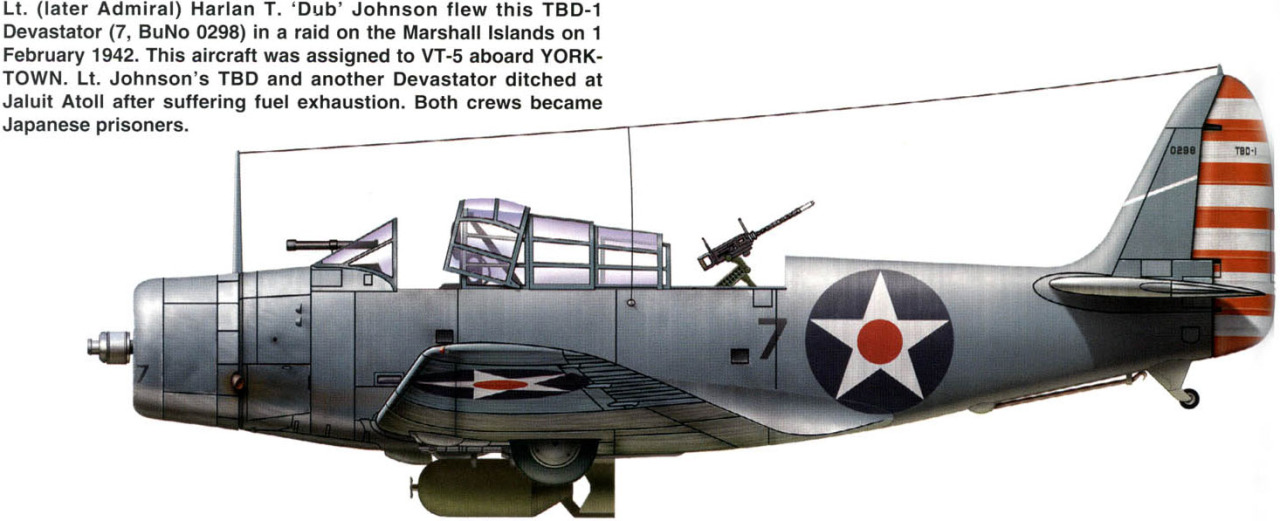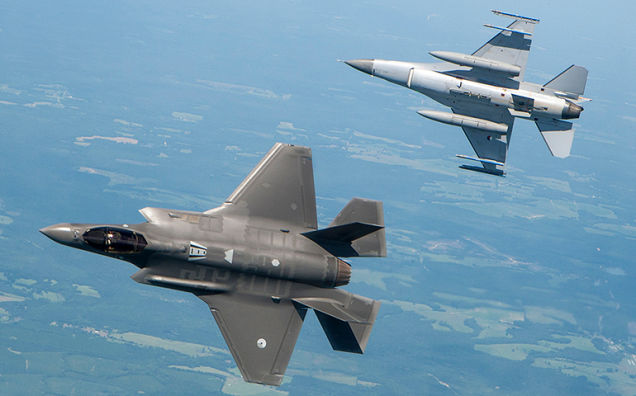"The F-35 has no place fighting other aircraft within visual range"
One of the hallmarks of being able to govern ourselves is that we can protect ourselves sufficiently.
In 1942 we sent the Navy to war with this:

Now, this kind of failure would result in the war liable to be over before a DESIGN OF A BETTER CRAFT COULD BE SAVED TO DISK.
From Foxtrot Alpha
The F-35 Can’t Beat The Plane It’s Replacing In A Dogfight: Report
We’ve heard of significant shortcomings before with the fighter jet that’s supposed to be America’s future, but this is just as bad as it gets. The F-35 performed so dismally in a dogfight, that the test pilot remarked that the it had pretty much no place fighting other aircraft within visual range.

That’s according to a scathing report obtained by our friends over at War Is Boring that details the results of visual range air-to-air engagement tests between an F-35A and an F-16C. The F-35, which the US Air Force, Navy, and Marines are expected to rely upon, in addition to the air arms of militaries across the world for at least the next few decades, was supposed to be better than its F-16 predecessor in all respects.
The F-35’s ability to compete against other fighter aircraft in a close-in dogfight, even against the decades old designs it looks to replace, has always been a contentious issue. Long ago, the F-35’s maneuverability was planned to far exceed that of fourth generation fighters. Over time, those claims eroded to the point where the troubled stealth jet is described as being “about as maneuverable as an F-16.”
The fact that the F-35 can carry its weapons and fuel internally was of course the major deciding factor in being able to make such a claim.
Keep in mind, all of this is anecdotal, but testing reports over almost the last decade have supported the fact that the F-35 was not nearly as nimble as many would like it to be. Still, all claims regarding its performance against other fighters in a dogfight remained largely academic, with only bits of data to compare in a vacuum.
Which is why the candid report described in the War Is Boring article finally gives us a good first hand account as to how capable – or incapable as it may be – the F-35 is in the within-visual-range fight.
The test pilot flying the F-35 makes it very clear that the new jet, even in its ideal configuration without any external stores, was no match against a Block-40 F-16C in a less-than-ideal configuration with a pair of under-wing fuel tanks:
Even with the limited F-16 target configuration, the F-35A remained at a distinct energy disadvantage for every engagement.
In dogfighting, energy is everything, and if your enemy has more kinetic and potential energy for maneuvers than you do, then you’re toast.
The report even goes into what is akin to a fairly desperate move usually only used in one-on-one air combat maneuvers, known as a rudder reversal, that the F-35 is apparently decent at performing at slow speeds. The fact that this was even detailed in the report as a useful tactic is telling. In reality, using such maneuvers means you are probably going to die if any other bad guys are in the area as it rapidly depletes the aircraft’s energy state, leaving it vulnerable to attack.
All of this also reminds us of the fact that we cannot believe the information coming from the program itself, which is troubling. Only as the aircraft continues to enter the fleet (which is a whole other ridiculous story) will we begin to hear more honest reviews of its performance, as in the past we have had to rely on unclassified congressional watch dog reports and other unbiased sources to identify trends and key data points.
Another area that the test pilot highlights on is the F-35’s abysmal rearward visibility. David Axe from War Is Boring writes:
And to add insult to injury, the JSF flier discovered he couldn’t even comfortably move his head inside the radar-evading jet’s cramped cockpit. “The helmet was too large for the space inside the canopy to adequately see behind the aircraft.” That allowed the F-16 to sneak up on him.
The report goes on to make other telling remarks about the F-35’s air combat maneuvering
performance. It should be noted that the aircraft’s flight software can probably still be tweaked to offer a little wider envelope for pilots to traverse during a hard turning dogfight, but seeing as this test occurred this year (almost a decade after the first F-35 flew), the amount of extra agility that can be squeezed out of the F-35 is most likely marginal at this point. Also, the aircraft flown in the test, an F-35A, is the most maneuverable F-35 variant of the lot, being capable of pulling 9g, while the carrier capable F-35C is capable of pulling 7.5g and the short takeoff and vertical landing variant, the F-35B, is only capable of pulling 7g.
Eisenhower, and others to some degree, did warn us gravely to beware of the military-industrial complex, I supposed of which the F-35 is the poster child.
The fact that the F-35 is maybe not really a good fighter at all is reminiscent of the question that we’ve been asking for years — if you don’t really need competitive maneuverability, than why do we need a fighter at all?- “the F-35 Is Not Capable Of Unsupported Combat Against Any Serious Threat”
Michael Gilmore, the Pentagon’s director of operational test and evaluation (DOT&E) HOTAIR: Digging deeper into the actual report, the F-35’s problems are extensive and span across all three variants of the aircraft: the “A” model for the...
- John Galt’s Real Strike Chapter 6: The Us Air Force
During WW2 the Air Forces saw produced many FINE fighters.As these fighters, rushed into production by combat saw dog fighting, experience was used to introduce improvements, notable that of visibility all around the pilot so he could see the enemy in...
- "a Prize Almost Beyond Value To The United States" ..history's Rq-170 Uh Oh For The Usa In Iran
The Akutan Zero, also known as Koga’s Zero and the Aleutian Zero, was a type 0 model 21 Mitsubishi A6M Zero Japanese fighter plane that crash-landed on Akutan Island, Alaska Territory, during World War II. It was captured intact by the Americans in...
- Excuse Me Mr. Putin, I Have Bibi On The Line, He Just Got Off With Obama
Russia gears up for major marketing launch of its Su-35 fighter jets MOSCOW -- Russia has launched its Su-35 fighter-jet program. Russia's Sukhoi Co. has begun implementing a contract to deliver the Su-35 to the Russian Air Force....
- Fighter Tactics
From Janes: According to one source, US Marine Corps F/A-18 Hornets from the Balkans theater recently engaged in mock combat with Israeli Air Force fighters. The Hornets were armed with AIM-9s, and the Israeli fighters carried Python 3 and Python 4...
